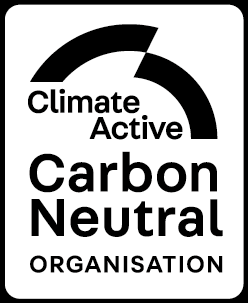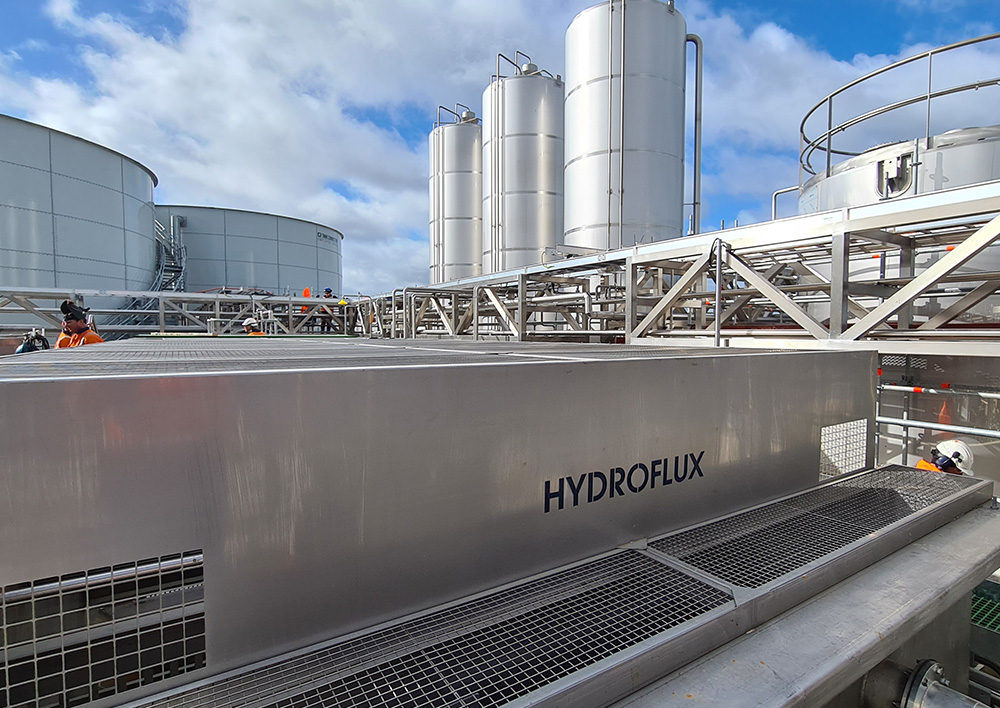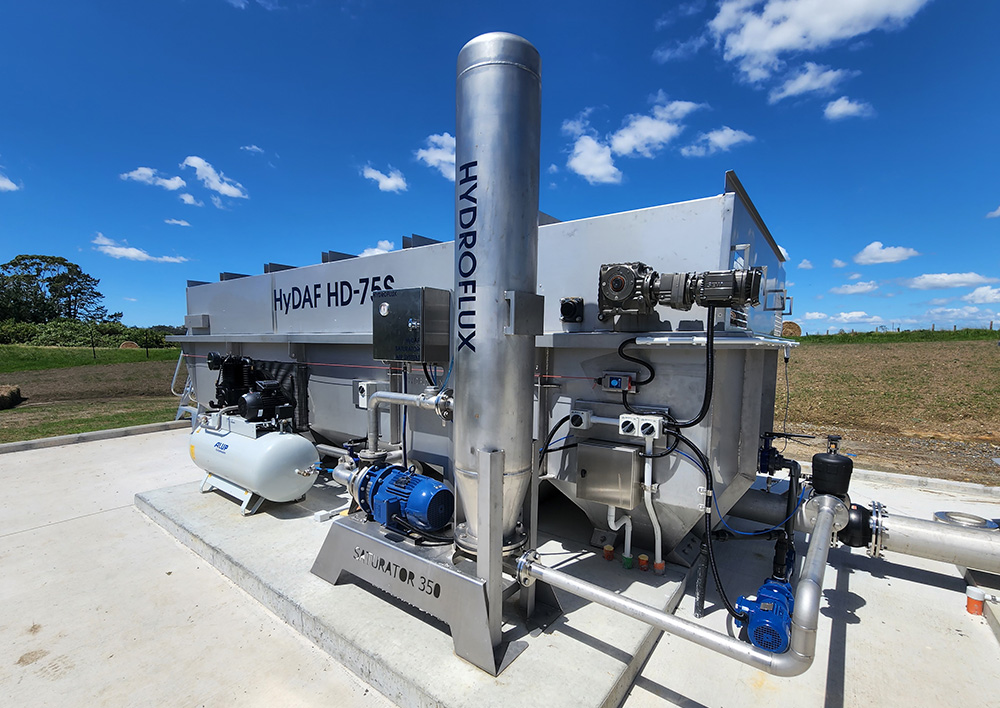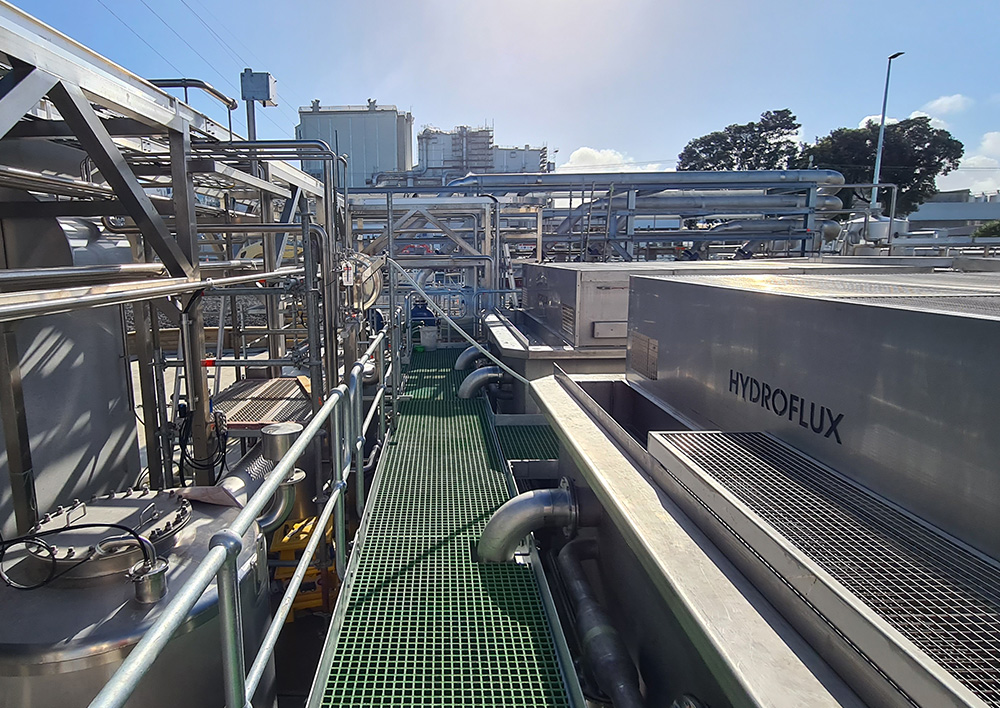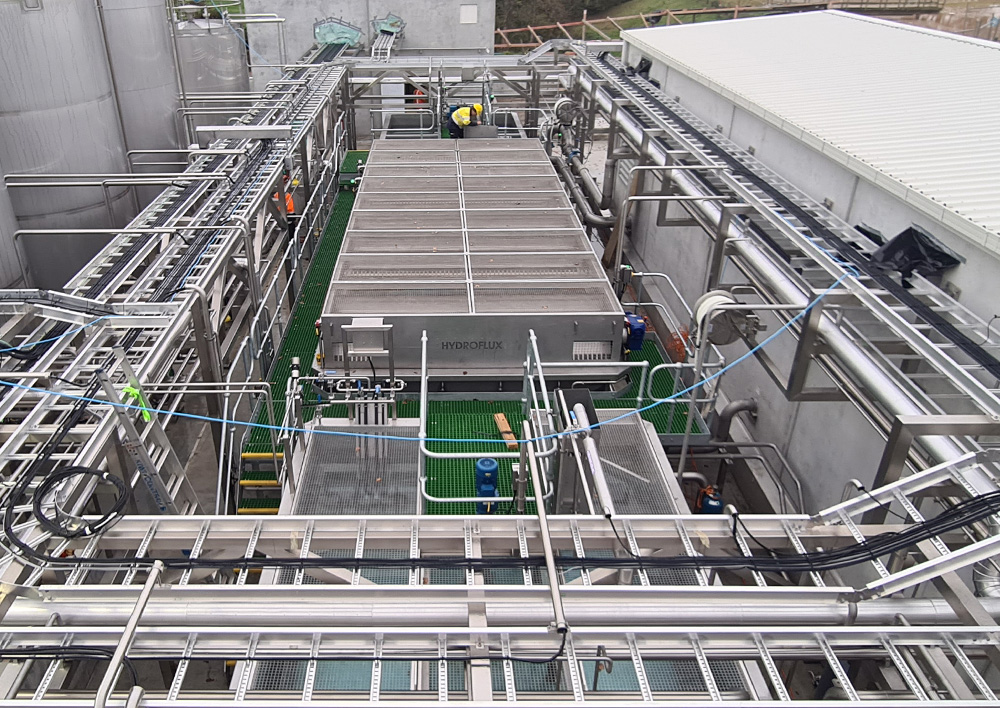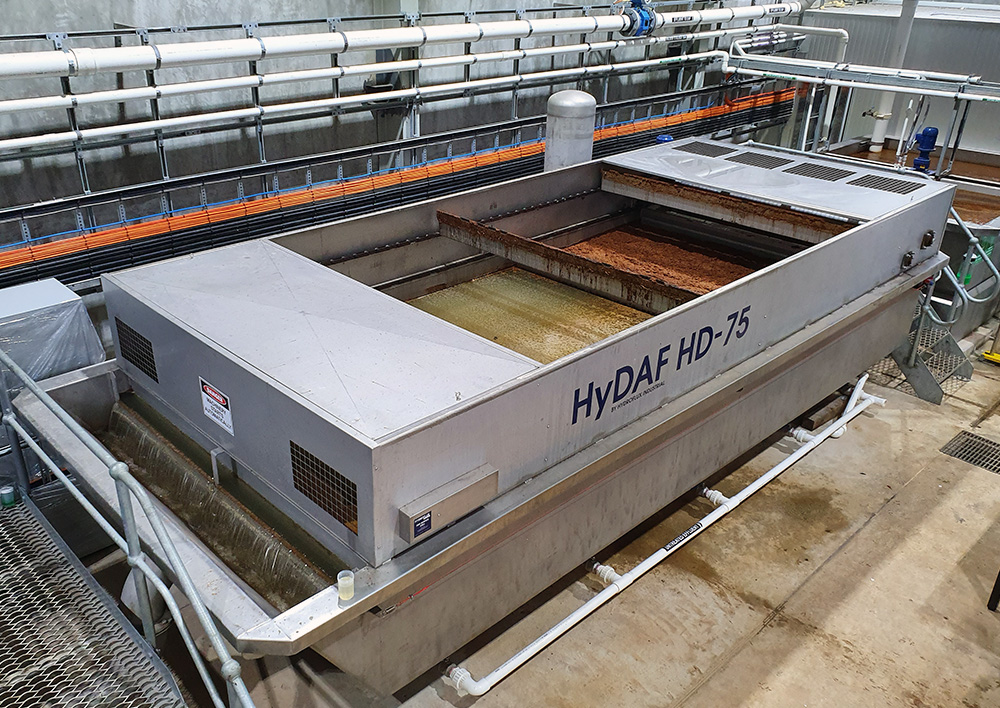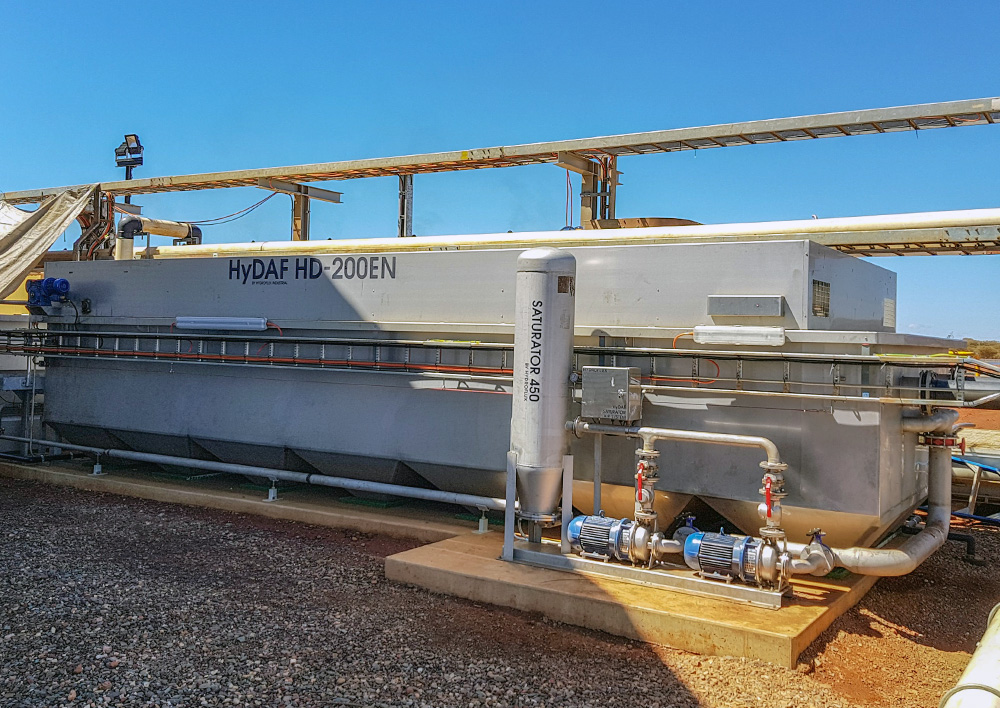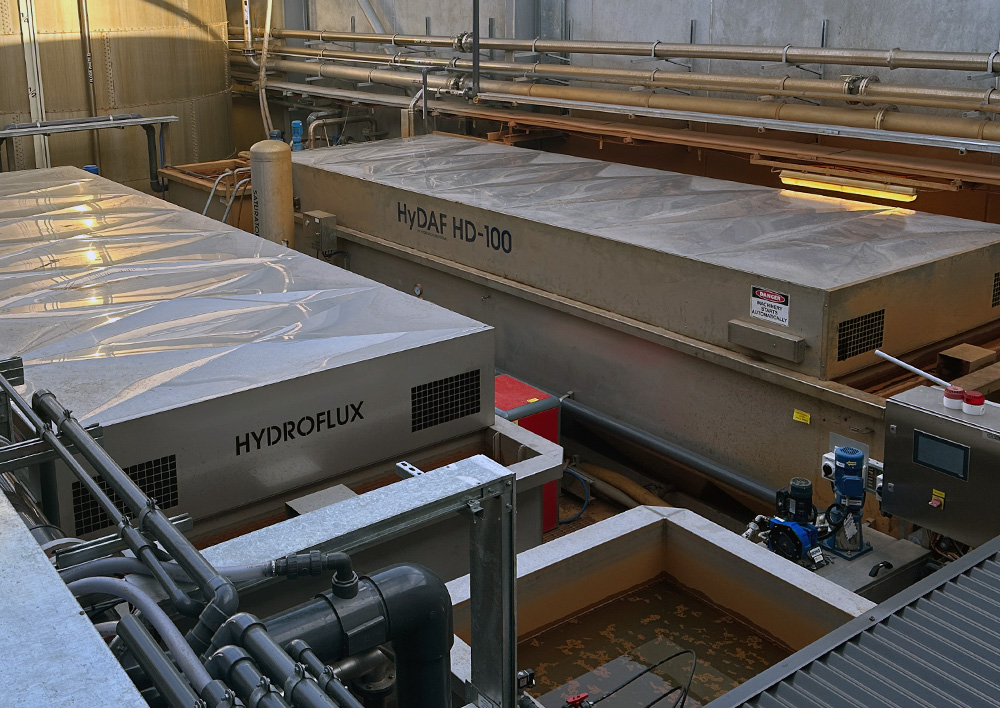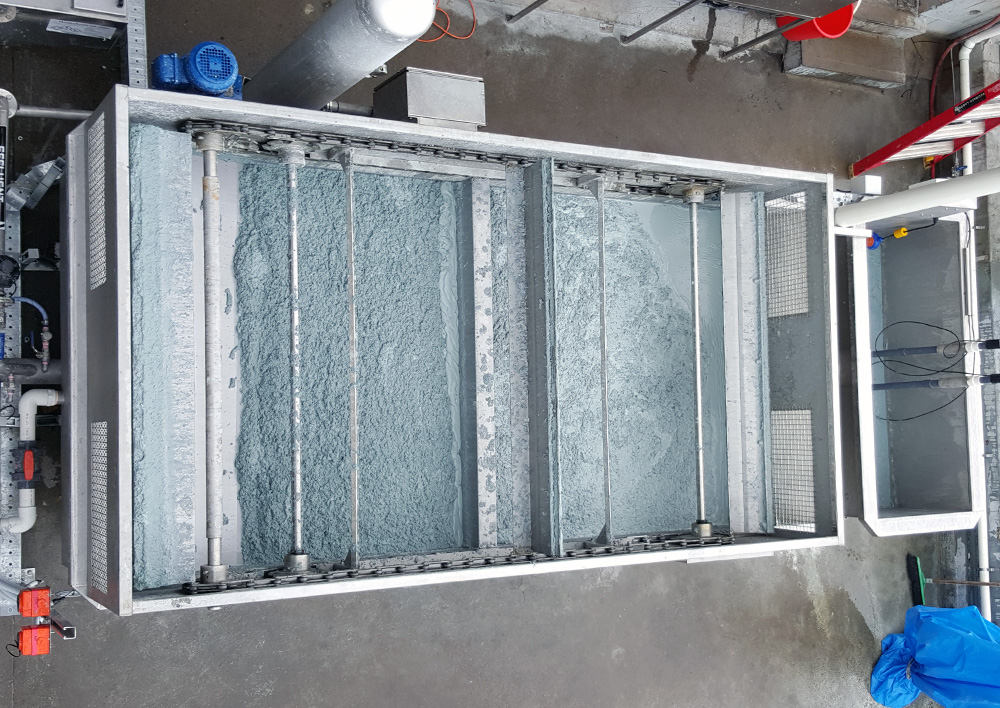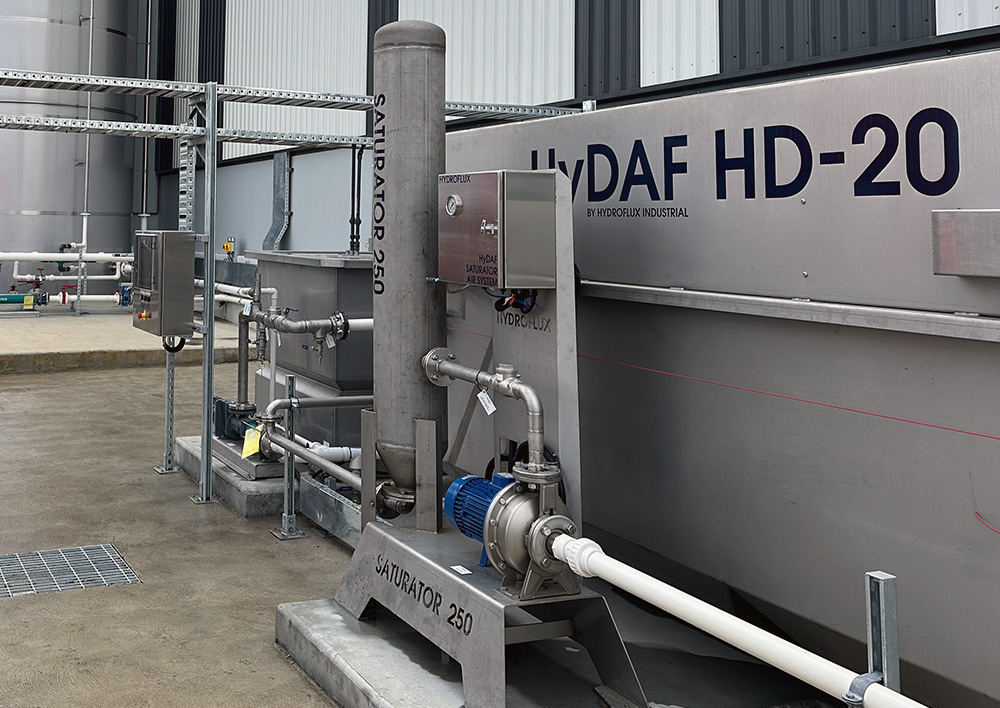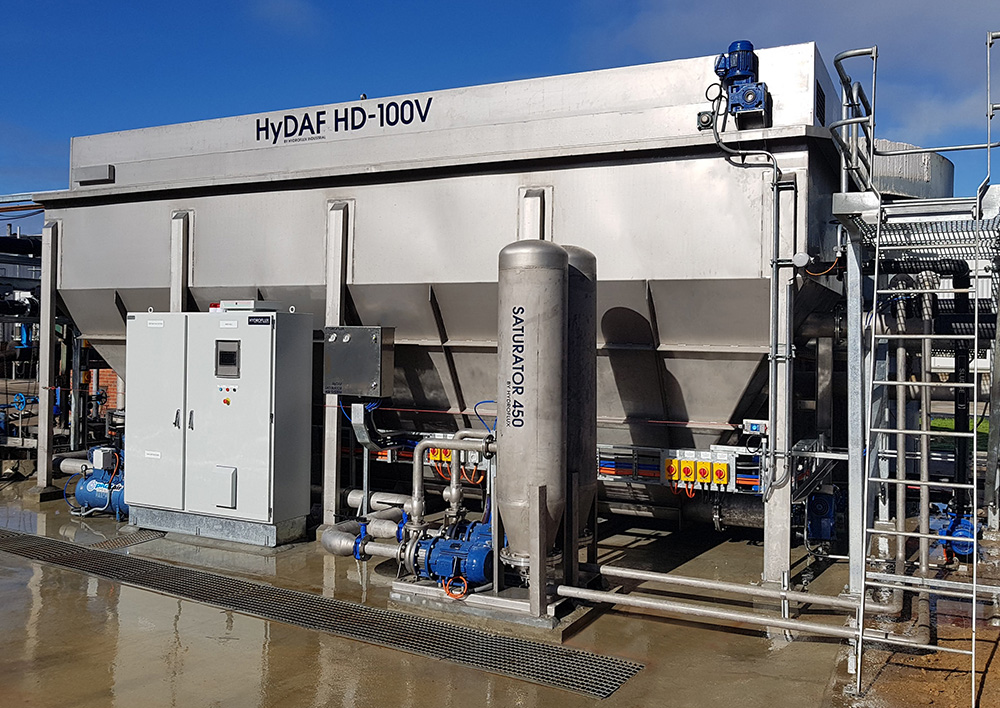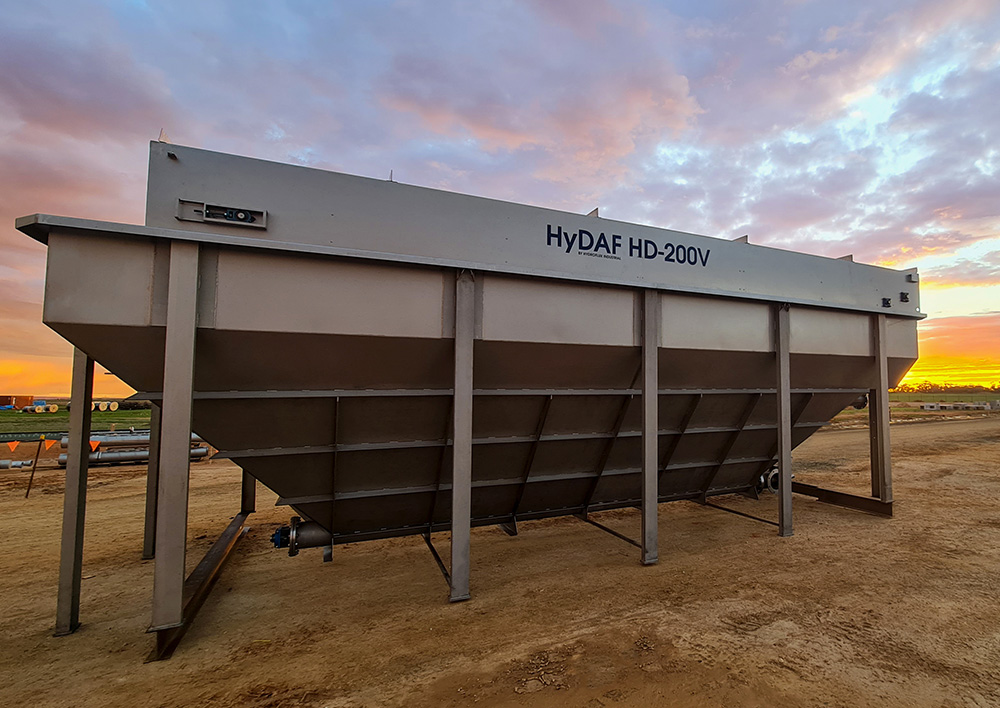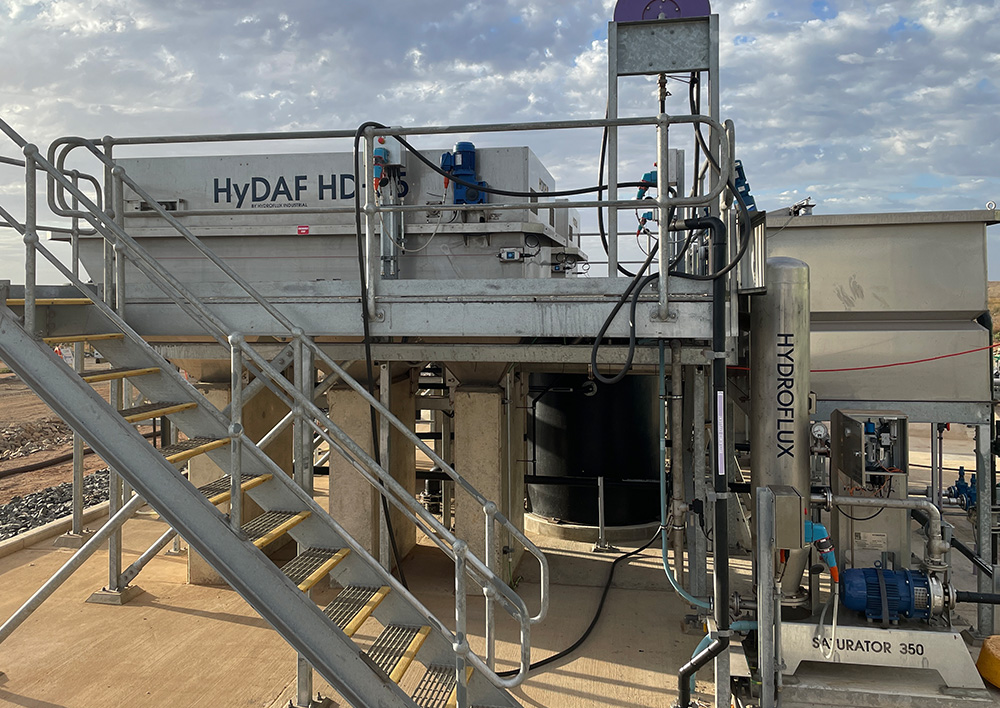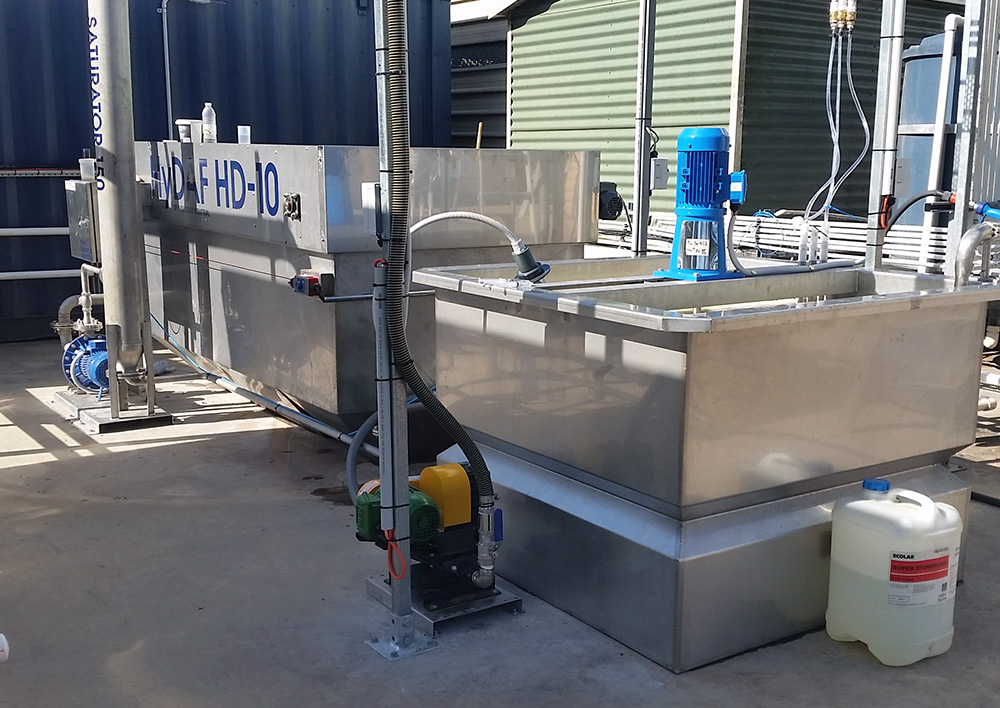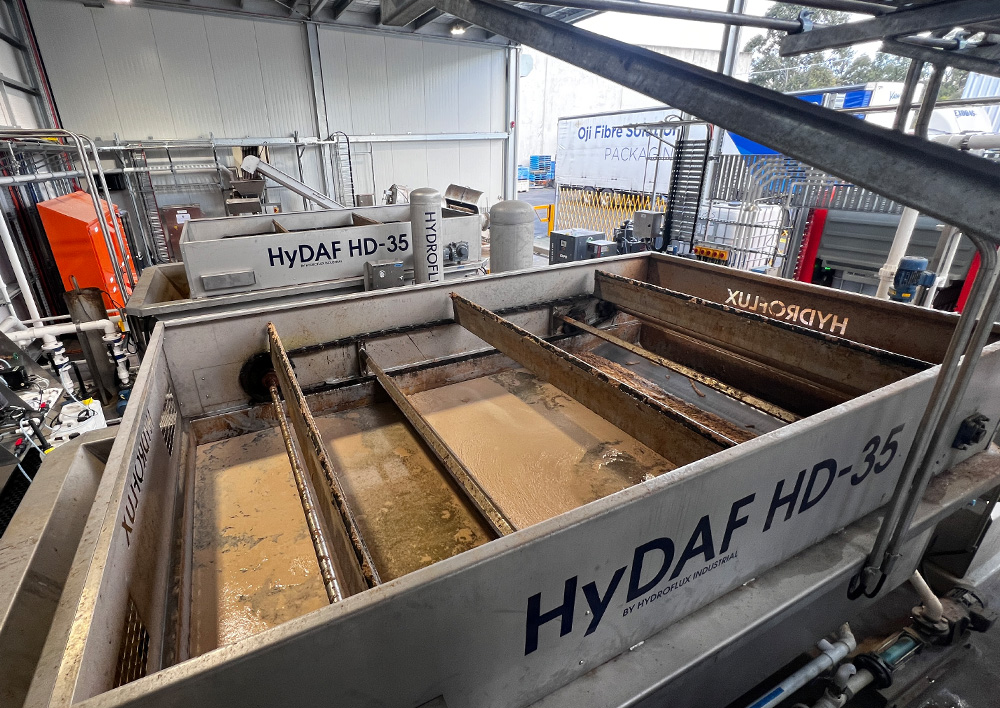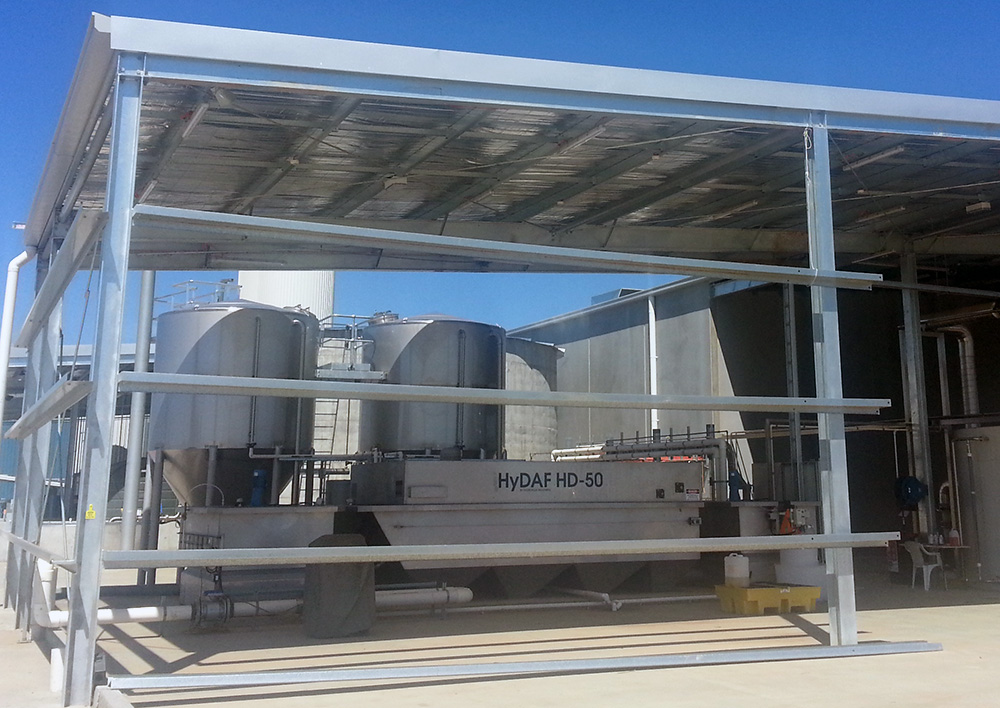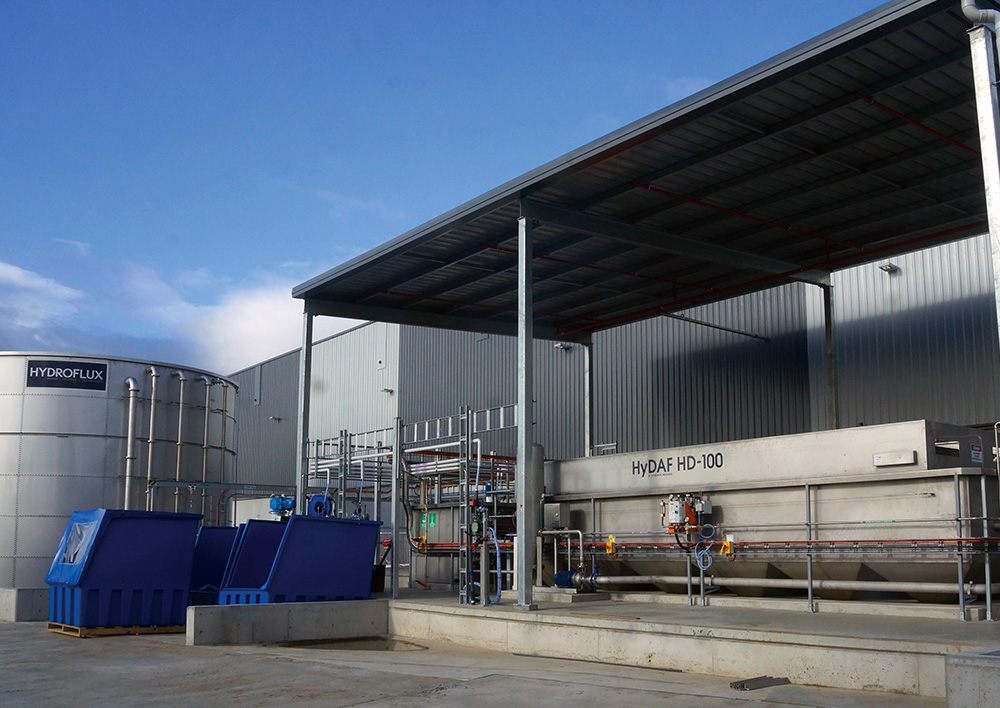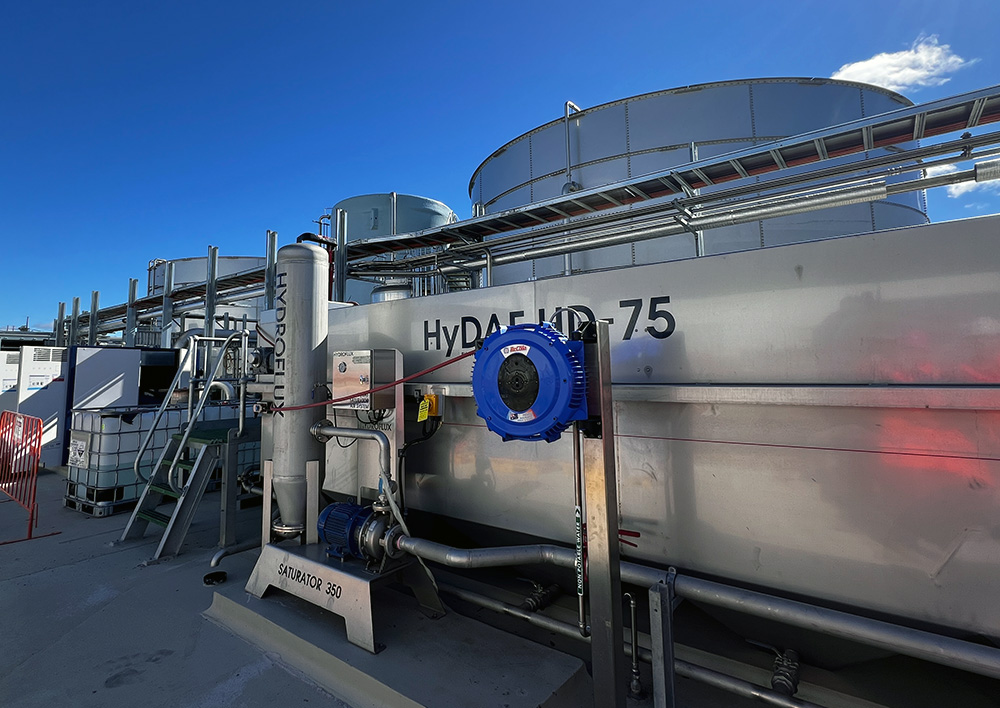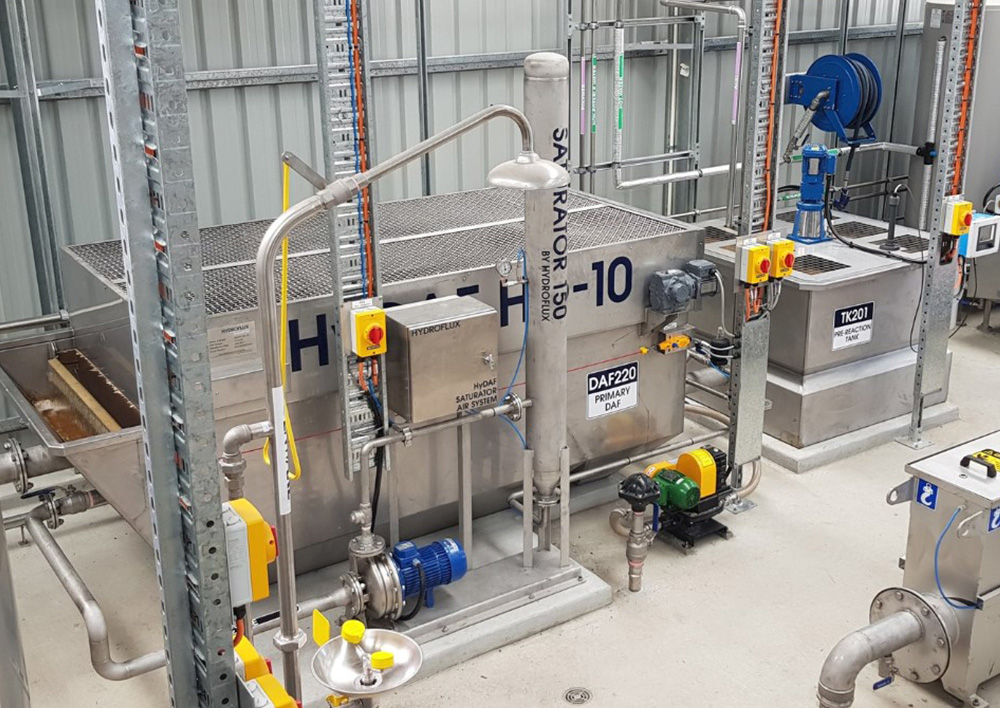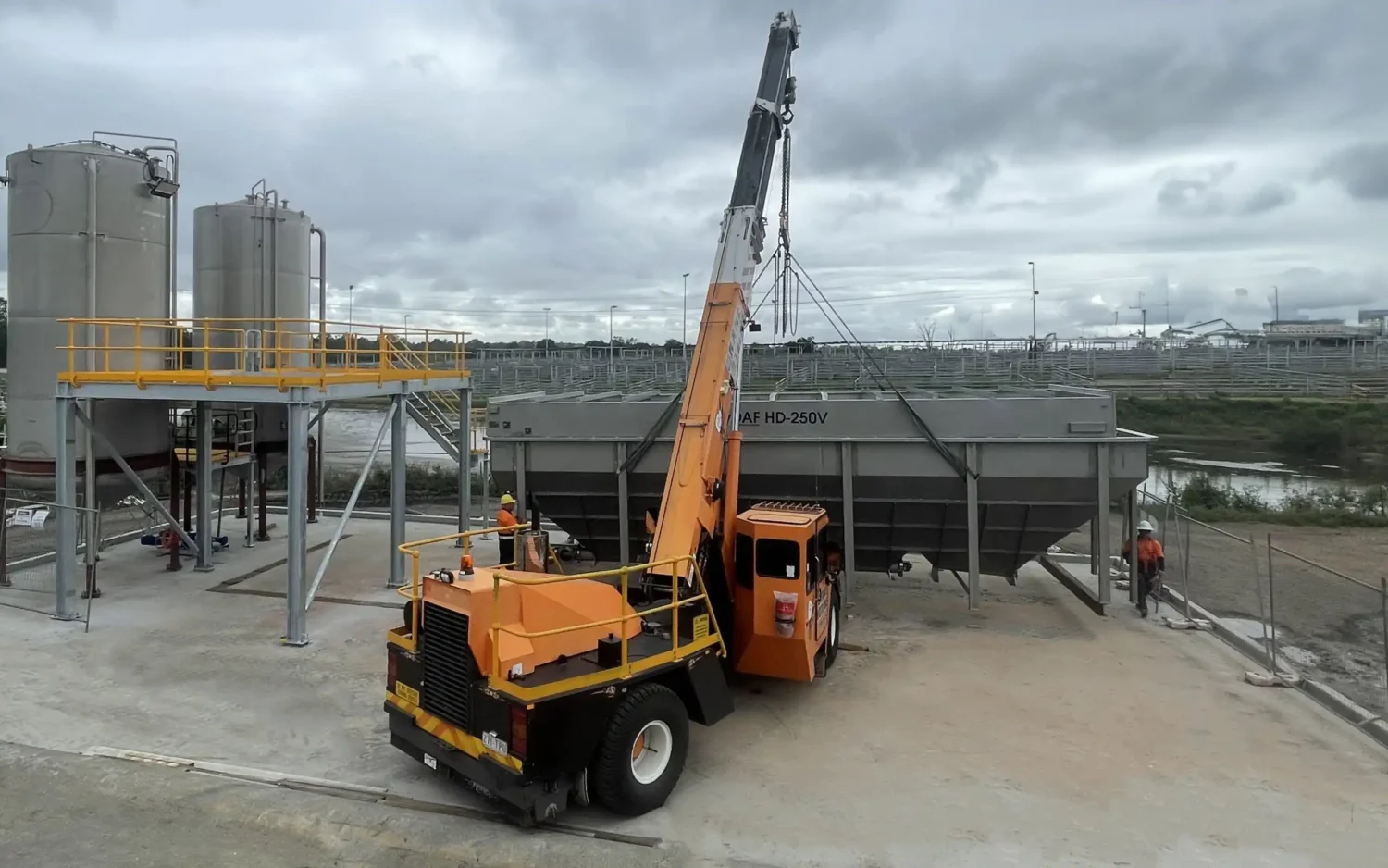
Dissolved Air Flotation – Industrial
Dissolved Air Flotation (DAF) Systems – Designed and Fabricated in Australia by Hydroflux
Hydroflux offers a unique and comprehensive range of industrial Dissolved Air Flotation systems, designed and fabricated in Australia. The Hydroflux HyDAF systems are engineered for high efficiency, delivering reliable and consistent performance across a wide range of water and wastewater treatment applications.
With over 200 systems in operation globally, Hydroflux HyDAF Dissolved Air Flotation systems are available in various configurations, ensuring flexibility to meet specific operational requirements. These systems can handle capacities exceeding 300 kL/hr as standalone units, making them suitable for both small-scale and large-scale operations.
Please view examples of HyDAF installations in the gallery below.
Industries Operating Hydroflux HyDAF Systems
HyDAF Industrial Dissolved Air Flotation (DAF) systems are highly effective in treating wastewater from many types of manufacturing processes, food and beverage production, as well as in the treatment of groundwater and construction water. We have also installed HyDAF systems for potable water clarification, mining operations, and tertiary treatment processes such as algae removal from ponds, and they are also well-suited for sludge thickening applications.
- Smallgoods
- Meat and poultry
- Prepared foods
- Rendering
- Edible oils and grains
- Plant-based manufacturing
- Fruit and vegetables
- Potato and chips
- Beverages
- Bakeries
- Ingredients and spices
- Fish processing
- Mining
- Construction and Groundwater treatment
- Algae and phosphorous removal
- Potable water clarification
- Waste-activated sludge thickening
- Food courts and shopping centers (see GT DAF pages)
What Makes the HyDAF Unique
The HyDAF dissolved air flotation system is a high-quality engineered system designed to efficiently and effectively remove solids from water and wastewater streams. For every application, the HyDAF is scientifically modelled to ensure that when put into operation, it will meet and exceed all performance and operational expectations.
Flotation Engineering
A well engineered dissolved air flotation system combines a robust flotation tank with an effective solids removal mechanism and a highly efficient method of generating and injecting dissolved air into the water or wastewater stream. The HyDAF system features a non-blocking dissolved air mechanism that delivers a saturated air stream into a specially engineered inlet mixing system. This system provides the ideal level of shear and turbulence to maximise microbubble attachment, resulting in enhanced flotation performance.
The following set of videos show the Hydroflux modelling process with varying dissolved air stream flows and pressures
Settled Sludge Removal
Hydroflux has three flotation tank configurations available to suit all types of influent streams.
HD Range: effective when minimal settled solids are expected, and the entire DAF can be easily drained when required.
HD-V Range: designed for wastewater streams with a high probability of sedimentation, such as meat processing plants. This unit is fitted with steep sloping sides and a screw conveyor that automatically extracts settled solids.
HD-S range: designed for large DAF systems with multiple hoppers to facilitate the automated withdrawal of solids from both sides regularly.

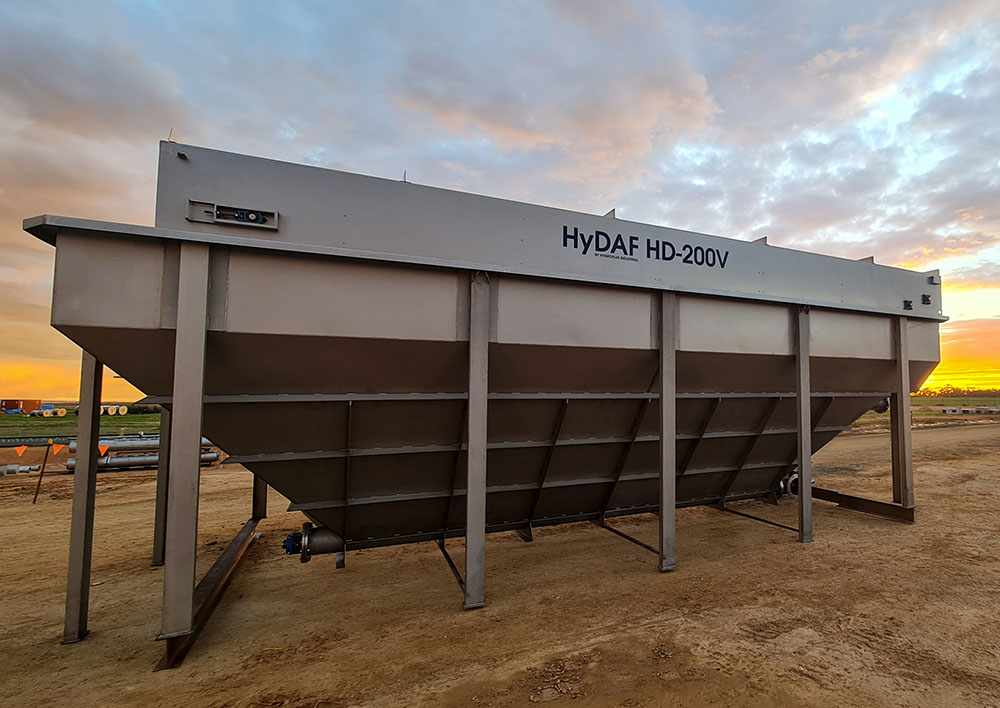
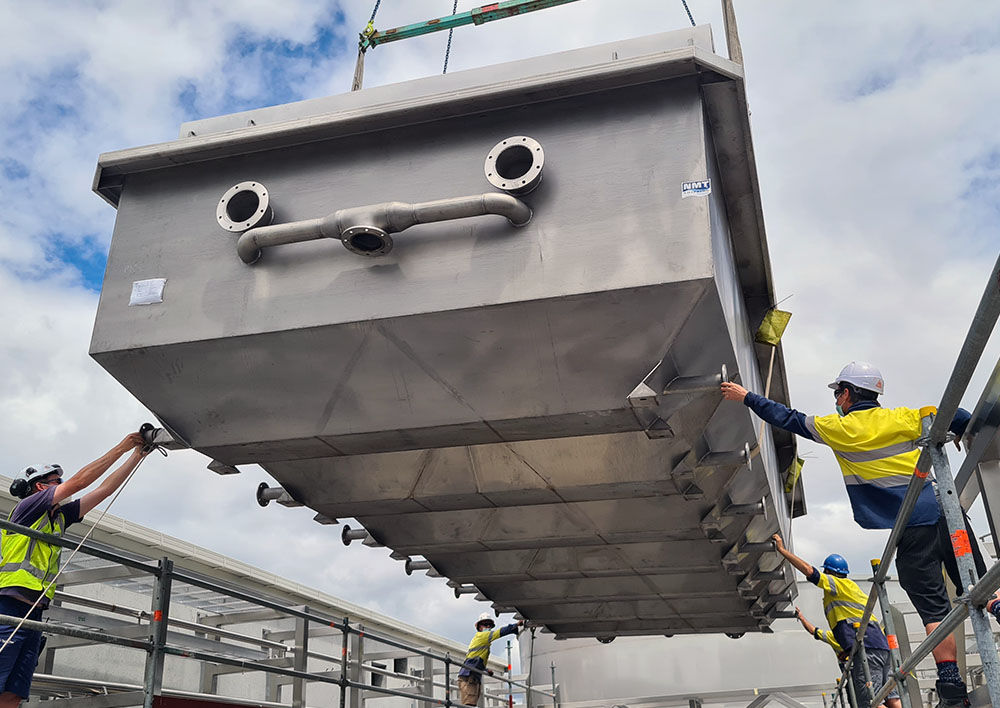
Capacities
The Hydroflux HyDAF systems are available in a range of convenient sizes to suit any application. From the smallest HyDAF HD10 to the HyDAF HD250V, we can treat flows well over 7 ML/day in a single standalone unit. For larger applications found in mining, the pulp and paper industry and some food and beverage sites, Hydroflux works with our partner Flootech and can offer DAF systems capable of treating up to 1 ML/hr.
| Model | Flow Range | Model Variations |
|---|---|---|
| HD10 | 5 – 12 | HD |
| HD20 | 10 – 30 | HD |
| HD35 | 25 – 45 | HD |
| HD50 | 40 – 60 | HD, HD-V, HD-S |
| HD75 | 60 – 90 | HD, HD-V, HD-S |
| HD100 | 80 – 130 | HD, HD-V, HD-S |
| HD200 | 150 – 230 | HD, HD-V, HD-S |
| HD250 | 200 – 300 | HD / HD-V / HD-S |
All DAF systems are selected based on the flow rate to be treated and the solids load. Please contact Hydroflux for specific sizing details.
Float Removal
Maximising the dry solids concentration in DAF float is an important feature to most operators as it means less volume of sludge is generated, making it more cost-effective to dewater or dispose of.
The HyDAF system features a robust 6-sprocket mechanical scraper system that scrapes the float to the inlet end of the DAF which improves overall solids capture whilst the scraper always maintains contact with the discharge beach to maximise the dry solids content in the sludge. The scraper components are designed with longevity and maintenance in mind. The chain only requires the occasional application of grease, which can be automated and easily adjusted from outside the DAF tank when necessary. The following photographs show sludge being generated from HyDAF systems operating at a dairy, a meat processing plant, and a tannery where chrome is being precipitated and removed.
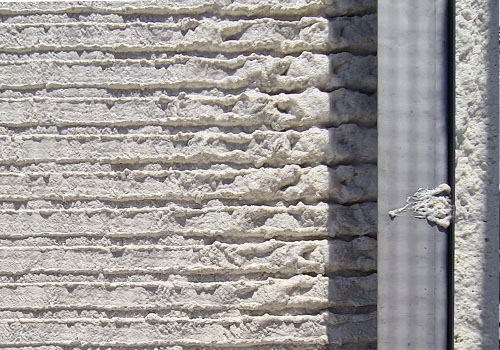
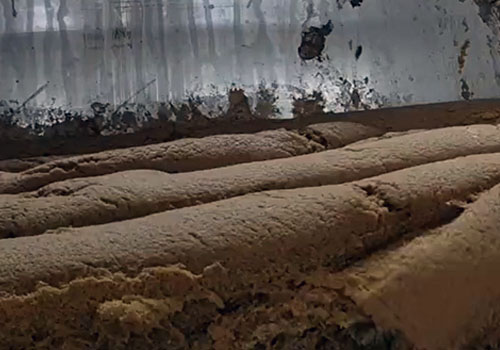

Dissolved Air
Ensuring that the correct amount of dissolved air is injected into the DAF inlet is essential for the performance of the system. Hydroflux utilises a proprietary proven engineering design tool to ensure that the dissolved air system is appropriately sized for every application. The engineering tool takes into account the influent flow rate, solids load, temperature and operating pressure.
Features of the recycling system include:
- Stainless steel saturation vessel that contains no internal instruments or components
- Non-blocking design with stainless steel closed impeller high-efficiency pump and self-cleaning pressure reduction valve
- Integrated air control panel enabling accurate adjustment of air flow
- Proven design in hundreds of installations
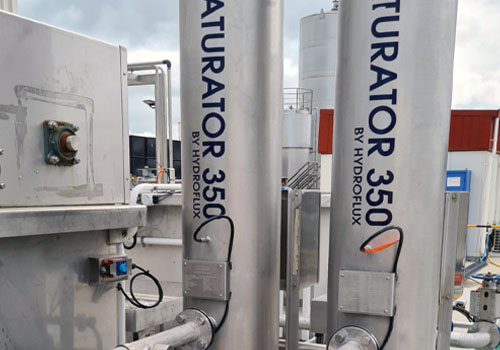
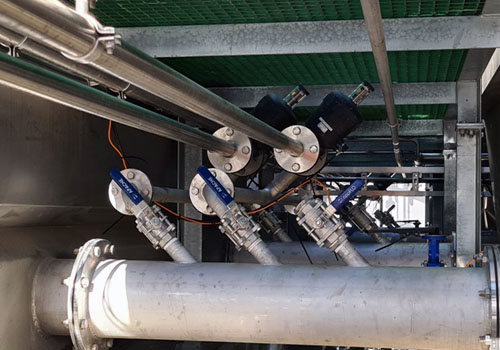
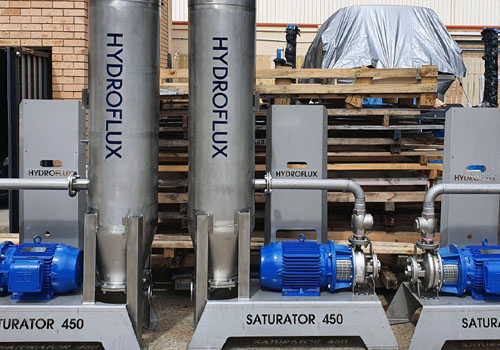
HyDAF HD Range Dissolved Air Flotation FAQs
The HyDAF V Range is a high-performance Dissolved Air Flotation (DAF) system specifically designed for wastewater containing high levels of settleable solids. It is particularly suited for meat processing plants and industries where grit and sand are present. The key distinguishing feature of the V Range is its deep conical base, which is fitted with an integrated screw conveyor. This design enables efficient removal of settled solids, which can be discharged periodically via a pump or gravity, minimising manual cleaning requirements and ensuring continuous operation.
Due to its steep-sided conical design, the HyDAF V Range is significantly taller than standard HyDAF units, requiring platforms for access. While the increased depth adds to manufacturing costs, these are typically offset by the substantial reduction in downtime for cleaning and maintenance.
The dosing of chemicals upstream of the HyDAF Dissolved Air Flotation (DAF) system can significantly enhance its performance by improving the separation of solids, fats, oils, and grease. It is not uncommon in the HyDAF system to achieve >95% reduction in suspended solids and grease levels by utilising an appropriate chemical program. However, whether chemical dosing is necessary depends on the quality of treated water required and the specific characteristics of the wastewater. In some cases, particularly where wastewater has a high concentration of emulsified oils, fine suspended solids, or dissolved contaminants, chemical treatment is essential to achieve the desired clarity.
Hydroflux specialises in tailored chemical treatment programs that optimise the performance of the HyDAF Dissolved Air Flotation system while ensuring cost efficiency and minimal sludge generation. The selection of chemicals (such as coagulants and flocculants) is based on wastewater composition, treatment objectives, and operational constraints. By carefully designing the dosing strategy, Hydroflux helps clients maximise separation efficiency, reduce chemical consumption, and minimise sludge disposal costs. For more information on chemical solutions and how they can enhance your treatment process, please click here to visit the Hydroflux Utilities website.
In applications without chemical treatment, the HyDAF Dissolved Air Flotation system can operate effectively across a wide range of flows and solids concentrations, as long as they remain within the system’s design capacity. The system is designed to accept whatever flow it receives and continuously remove suspended solids, fats, oils, and grease, ensuring stable performance without the need for adjustments.
When chemical dosing such as coagulants and flocculants are introduced to enhance solid separation, the system becomes more sensitive to flow rate and contaminant load variations. These fluctuations can impact chemical reaction times and floc formation, leading to inconsistent treatment efficiency. However, depending on the waste stream, it is possible to flow-pace the chemical dosing system using an automated solids or turbidity monitoring system. This approach adjusts the chemical dosing program in real-time, accommodating fluctuations and improving treatment reliability. A more common solution is to install an upstream balance tank, which regulates flow and solids concentration before entering the HyDAF Dissolved Air Flotation unit. This ensures a steady feed rate, optimising chemical dosing efficiency and delivering more consistent wastewater treatment performance.
The dissolved air stream in the HyDAF system is sized based on key parameters to ensure efficient separation of solids, fats, oils, and grease. The primary factors include wastewater characteristics, flow rate, and air-to-solids ratio (A/S ratio).
Higher concentrations of suspended solids or grease require a greater volume of dissolved air to ensure effective flotation. The A/S ratio, typically ranging from 0.01 to 0.05 kg air/kg solids, is carefully calculated to introduce enough microbubbles for efficient solid separation without creating excess turbulence. Additionally, the operating pressure of the air saturation vessel plays a crucial role—higher pressures allow more air to dissolve, improving flotation efficiency but can also increase power consumption.
The dissolved air recycle flow is proportional to amount to dissolved air required and the dissolved air flow affects the surface loading rate. This is why for high solids loading applications where large recycle flows are required, a larger DAF with a greater surface area is necessary to ensure that the surface loading rate remains within the design parameters.
By optimising these factors, the HyDAF system will always achieve high treatment efficiency, energy savings, and reliable performance.
The FlooDAF® Range is a series of Dissolved Air Flotation (DAF) systems developed by Hydroflux’s international partner, Flootech. While the principles of flotation and dissolved air production are similar to the HyDAF, the FlooDAF features a unique design with shallow sidewalls and an alternative sludge removal system. This design allows the units to be fabricated wider and assembled on-site, rather than being delivered as a prefabricated unit, which provides flexibility for larger-scale installations and enables the system to accommodate significantly greater flow capacities in a single unit.
In all applications, Flootech supplies the designs and core equipment, while Hydroflux integrates the design, ensuring the system is specifically tailored to meet unique requirements. Hydroflux also takes full responsibility for the construction and performance of the system, ensuring it adheres to local standards and meets performance expectations. This partnership enables Hydroflux to offer customised solutions that provide the flexibility needed to handle very large flows in a single, efficient unit.
In HyDAF systems, the entire system is typically constructed using 304 stainless steel, providing good resistance to corrosion and ensuring long-term durability in a wide range of wastewater treatment applications. For components that may be exposed to more aggressive chemicals or harsher environments, 316 stainless steel is used due to its superior corrosion resistance, particularly in areas such as the air saturation vessels and internal flotation components.
For larger-scale HyDAF installations, concrete is sometimes used for outer tank structures, offering cost-efficiency.
Design and Construction Capabilities
Hydroflux designs and constructs comprehensive wastewater treatment systems that incorporate various types of processing equipment, including screens, physical/chemical, biological, and tertiary treatment technologies to enable high quality discharge or water reuse.
Below is a 3D drawing of a treatment plant constructed by Hydroflux that incorporated balancing, heat recovery, rotary screening, Dissolved Air Flotation, and sludge dewatering.
Contact us for a technical discussion about how we can assist you with your wastewater treatment facility.
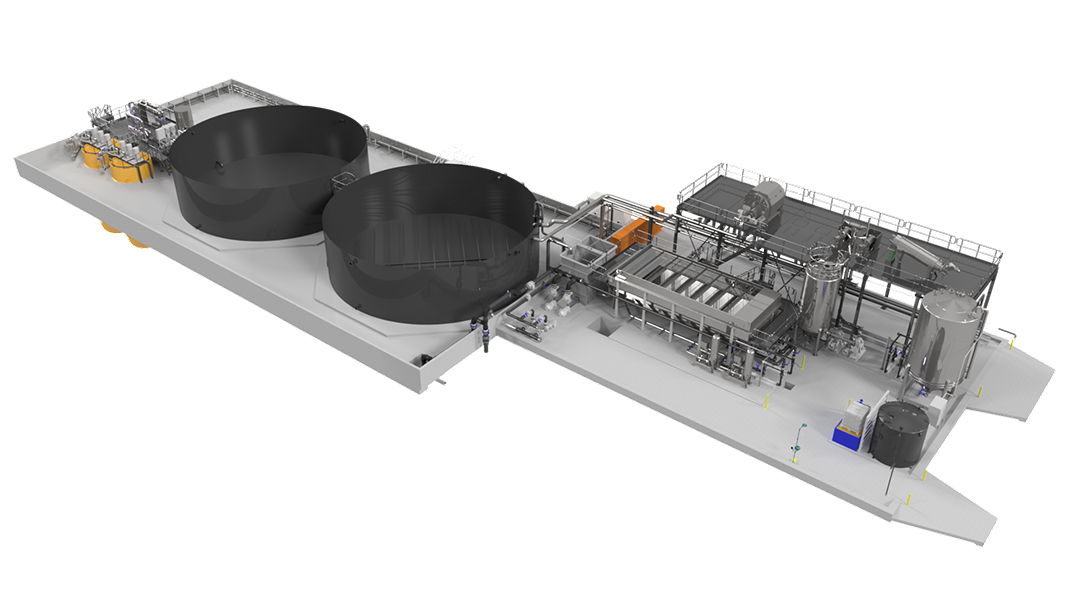
Sustainable Solutions
As Australia’s first certified carbon-neutral water and wastewater chemical supply and service business, we focus on sustainability. Developing and delivering sustainable solutions for treatment plant operation and maintenance is at the core of what we do. Our equipment is the most sustainable in the Australian and New Zealand markets and is also carbon-neutral. Click here to find out what this means for you.
